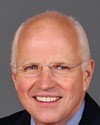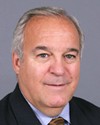Mr. Chairman and hon. members, good evening. Even though I have only nine days of experience in my new job as Minister of Public Works and Government Services, I welcome this early, I would say very early, opportunity to meet in committee of the whole with members of the House of Commons. I hope we can have a useful discussion this evening. As a brand new minister I am certainly anxious to know and to understand the priority interests of MPs in relation to my departmental responsibilities, and I will always try to respond constructively to what members of the House have to say.
Given the fact that I am a new arrival in this portfolio, I hope colleagues will bear with me a bit tonight if I rely on my officials and their briefing materials a little more than usual. In nine days, as I am sure members can imagine, I am on a bit of a steep learning curve, but I will do my best to be as forthcoming as possible.
To assist me tonight I would like to introduce my officials: first, my much respected deputy minister, Janice Cochrane, who arrived in this role at Public Works and Government Services Canada in April of last year, and second, Mr. Guy McKenzie, who is the executive director of Communications Canada as of last fall. Some members will probably recall his work in guiding Canada's Y2K preparations a couple of years ago as well as in a previous phase of the Canada infrastructure program. Finally, I have with me tonight Mr. Rod Monette, who is assistant deputy minister of government operational service at Public Works and Government Services Canada. He has held several positions of increasing responsibility within the federal public service, most recently at the Treasury Board, before coming to Public Works and Government Services Canada last year. I am happy to note that his family originally comes from Coronach, Saskatchewan, a rural community in my province that I know rather well.
In addition to my continuing duties as minister responsible for the Canadian Wheat Board and the Federal Interlocutor for Métis and Non-Status Indians, on May 26, as members of the House know, I became the Minister of Public Works and Government Services and Minister responsible for Communications Canada and for Defence Construction Canada. Those new roles, taken together, entail responsibility for about $4 billion in budgeted departmental activities, some 14,000 employees, attention to 59 separate pieces of legislation, interactions with more than 100 government departments and agencies, as well as the Canadian public, of course, and the administration of some 60,000 contracts for goods and services worth more than $10 billion per year.
Within this huge envelope, most of the public and parliamentary focus in recent weeks and months has been on the sponsorship program of Communications Canada. Given the obvious interest in this program, I think this is where I should start in my opening remarks tonight.
It is a relatively small program. Sponsorships are budgeted annually at about $40 million. That is approximately 1% of the dollar value of the activities to be funded within my portfolio for the coming year, but big or small, Canadians have a right to expect that every government initiative should function efficiently and effectively with transparency and accountability achieving value for the taxpayer's investment. That means that the sponsorship program must be substantially improved. Indeed, the drive for improvement has been underway since the year 2000 and is showing some positive results.
To put all of this into its proper context, let me summarize a brief chronology of some important events. In early 2000 an internal audit of the sponsorship program was initiated by Public Works and Government Services Canada. That internal audit was obviously conducted by the internal audit section of my department. I would note that the auditor general has said that the section is excellent, that it is courageous and that it does very good work. As a result of the internal audit, an action plan was developed and was implemented starting in April 2001 to substantially improve the management of that sponsorship program.
The measures included new guidelines on the awarding of sponsorships, contracts awarded in conformity with treasury board guidelines, new guidelines to support decision making and approval processes, better documentation of files and the verification of documentation prior to the approval of payments, an improved payment structure, meaning 50% up front and 50% on completion instead of the old 80:20 breakdown, more rigorous follow ups, requirements for prior documentation and approval for changes to sponsorship agreements and verification of postmortem reports prior to final sponsorship disbursements.
In February 2002 an improved management framework was also announced by my predecessor. That framework includes clearer definitions of objectives and priorities, close monitoring of delivery agencies, in depth analyses of certain files and new management guidelines.
On March 6, 2002, a follow up review was conducted by the internal audit division of Public Works and Government Services Canada. That internal audit review concluded that corrective measures had in fact been implemented over the preceding year or year and a half or so and that they did meet the requirement of good management. Therefore, the original internal audit done in the year 2000 was verified in the year 2002 as having borne fruit in terms of improvement.
On March 19 of this year the then Minister of Public Works and Government Services asked the Auditor General of Canada, Sheila Fraser, to review three particular contracts that had been awarded between 1996 and 1999 to one particular firm called Groupaction. Madam Fraser and her team did their work as requested by the former minister.
On May 8, 2002, the auditor general referred the handling of three particular contracts to the RCMP for further investigation. She also indicated that she would be doing a government wide examination of sponsorships and advertising contracts.
In the meantime, in response to the report of the auditor general, further new measures were announced by my predecessor. New standing offers will be created to increase access for small and large companies across the country and a selection process for new communications agencies will be conducted this summer leading to the fall of 2002.
Activities and events eligible for the sponsorship program will be more clearly defined. The value of contracts granted to any particular contractor will be limited to 25% of all contracts awarded under the sponsorship program including, and this is an important change, the work of affiliates and subsidiaries. Rules that apply to subcontracting activities being procured on behalf of the sponsorship program will be more clearly defined.
Companies with majority Canadian ownership as opposed to 100% Canadian ownership will now be able to compete for contracts to support sponsorship activities increasing the number of firms that can compete, and that is obviously good for transparency.
As well Public Works and Government Services Canada is again reviewing every sponsorship file between 1997 and 2000 to identify potential issues and to assist in every way possible the ongoing work of the auditor general. In addition, the Prime Minister has asked the president of the treasury board to re-examine how the government deals with advertising, sponsorships and polling to ensure a proper management framework and strong governance.
Upon my arrival in this portfolio on May 26, I initiated an additional step. For the current sponsorship year, I have placed a freeze on further project approvals until I am satisfied that the program criteria are in fact as good as they can possibly be and that all new projects comply with those criteria. My review under that freeze is nearing completion. It is not done yet but I hope to conclude it in the next number of days.
By way of background, there was about $18 million worth of sponsorship business this year representing some 225 community projects which were essentially completed or too far advanced to be frozen when I announced that moratorium on May 27.
That leaves about $22 million worth of activity, perhaps 350 applicants that are caught in this freeze process for the time being while that moratorium remains in place. I understand the difficulty that the moratorium causes for the community groups and organizations and I want to assure them that I will complete my review at the earliest possible moment.
My review thus far has shown three things.
First, sponsorship activity is in fact a legitimate activity. It is done by all levels of government and by the private sector, non-profit organizations and so forth. There is a demand for this type of Government of Canada support in all parts of the country.
Second, the vast majority of community based projects which seek sponsorships are truly worthwhile. Many of them indeed have the active endorsement and support of members of the House.
Third, the problem areas appear to be associated primarily with the marketing agencies that are in fact used as the delivery mechanisms.
While I hope to lift my freeze in the next short while for this year, for the longer term, beyond the steps already taken and announced either by me or my predecessor, I am examining a variety of other questions. For example: How can the cost effectiveness and transparency of the agency's system be sufficiently improved? Can it be sufficiently improved?
Would it be better overall in some cases, in most cases or in all cases to attempt to administer and deliver a sponsorship initiative as an internal government program without outside contracts?
How can we accurately assess and measure the value obtained for the money invested in an area that is inherently subjective? Whether it is done by this government or any other government or the private sector, trying to measure the impact of something like a sponsorship is obviously a subjective exercise.
How do we evaluate success in that circumstance? Should we engage, for example, a blue ribbon panel of external experts in the field of advertising and sponsorship that can give professional external advice on the measurement of this kind of an intangible? Or is this an area upon which the new standing committee on government operations and the estimates may have some views to put forward or some research work to do?
Finally, how do we work toward greater regional equity, balance and consistency in sponsorship funding from coast to coast to coast?
These are among a few of the issues that I want to address for the future.
As for the past, first, let me reiterate that another departmental review is underway for that period, from 1997 until the year 2000. Second, a government wide audit is being undertaken by the auditor general. Third, references to the appropriate police authorities will be made when circumstance warrants that kind of reference. Fourth, the treasury board is examining governance and management frameworks.
Let me repeat the commitments that have been made by me and by the Prime Minister. Where there are administrative errors, they will be corrected. If and where we find overpayments, they will be recovered. If laws have been broken, they will be investigated and they will be prosecuted.
Having dealt briefly in the time available to me with the sponsorships, let me turn to the broader activity in the last few minutes of the Department of Public Works and Government Services.
The department's goal within the current public policy context is to provide modern client focused common services to the departments and agencies of the Government of Canada, and Canadians generally, at the best value for Canadian taxpayers. Our department tries very hard to provide the best solutions to our clients while respecting the values of prudence, probity and transparency and contributing to improving the quality of life of Canadians.
Within the department, as the estimates will show, there are eight business lines in Public Works and Government Services: Real Property Services, Receiver General, Public Service Compensation, Supply Operations Service, Telecommunications and Informatics Common Services, Consulting and Audit Canada, the Translation Bureau and Operational Support. The department strives to provide excellent service to its clientele in all these areas.
To a significant extent, economic competition among the nations of the world includes competition about the efficiency of government operations. Recent achievements in public works and government services have helped keep Canada in the ranks of the world leaders in government efficiency. Here are some examples for members to consider.
The first example is the application of new technologies by my department to give Canadians a wider choice of ways to do business with the government itself. Fifteen years ago there were just two ways to make a payment to government, by mail or at the counter of a government office if in fact there was one where the person lived.
Today, depending on what is being paid, a person can use a debit card, or a credit card, or pay on the Internet or pay through the bank using a personal computer or by means of telephone banking.
As of 2001, people who pay their taxes quarterly can authorize the government to withdraw the amounts from their bank accounts electronically. Canadians travelling or living abroad can now use credit cards online to make payments for taxes and services to Canadian embassies.
The second example I would like to use is what we call the secure channel. Simply put, this is a private line for communication between Canadians and their government. For that reason, it is an essential building block of the new e-government development. An increasing number of Canadians are paying taxes, receiving pensions and purchasing government services online. The secure channel will make it possible for them to do so with confidence that hackers and other would be intruders will be unable to tap into their personal information about them. This is again another area where we hope to keep Canada in the forefront of the world.
Concerning the public accounts of Canada, there has been an event of rather historic proportions recently. That is the successful phase in of the financial information strategy or FIS in which my department has been intimately involved. This was a huge technological challenge and the greatest change in government accounting and financial reporting since Confederation.
The FIS involved a shift to full accrual accounting by the government, an approach that produces a more accurate picture of program delivery cost. It makes Canada one of a small group of nations using full accrual in government accounting. In fact, several delegations from around the world have visited Public Works and Government Services Canada to see how we went about achieving that goal. Moreover, our success was rewarded with a gold medal at the 2001 Government Technology Distinction Awards.
Let me conclude with this final thought. Our strategic priorities at Public Works and Government Services Canada can be really summed up in one word, excellence: excellence in services, excellence in value for money, excellence in workforce skills and excellence in our overall contribution to the economic and social well-being of Canada.
I hope that members tonight will find it useful to go through the estimates of this department to see the range of things that Public Works and Government Services Canada does. At the same time, we will touch upon any areas that members feel are problematic or deserving of more sharp questioning, to ensure that we can deliver to Canadians through our parliamentary process what my department tries to achieve through its administrative process; that is transparency, accountability and value to the taxpayers for money invested.
I look forward to tonight's discussion.






